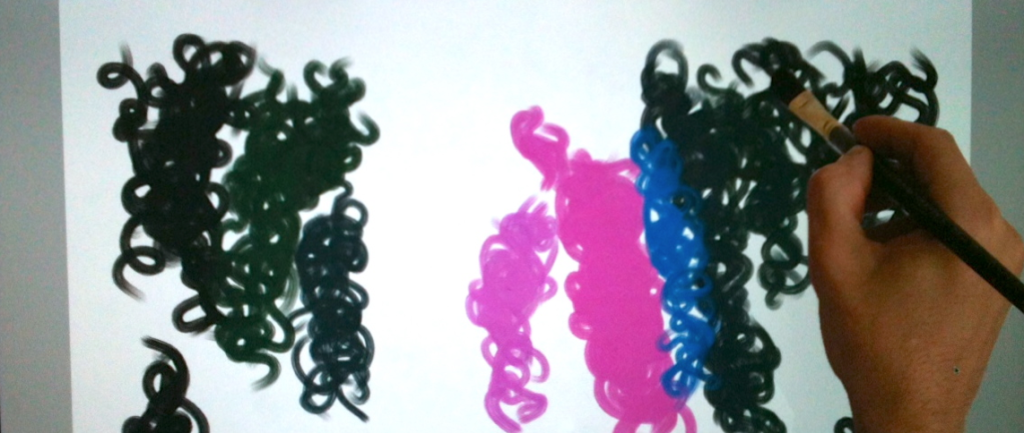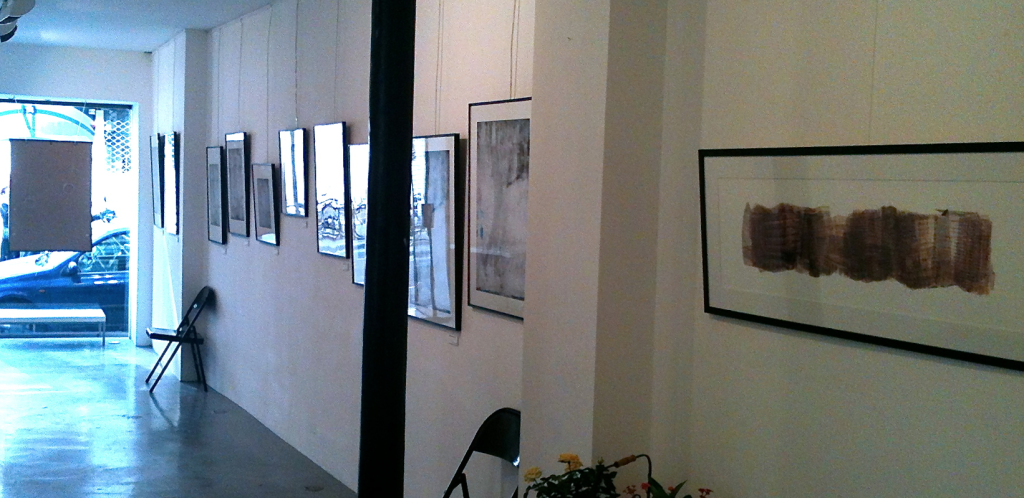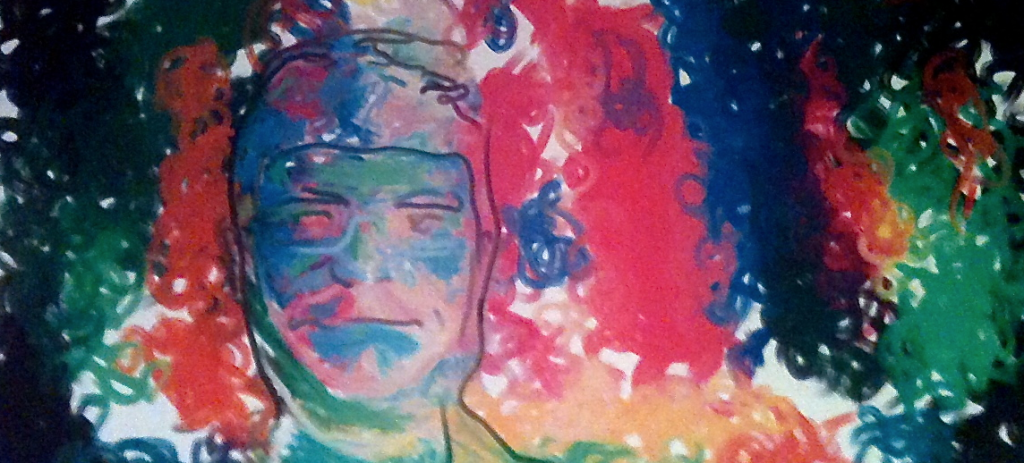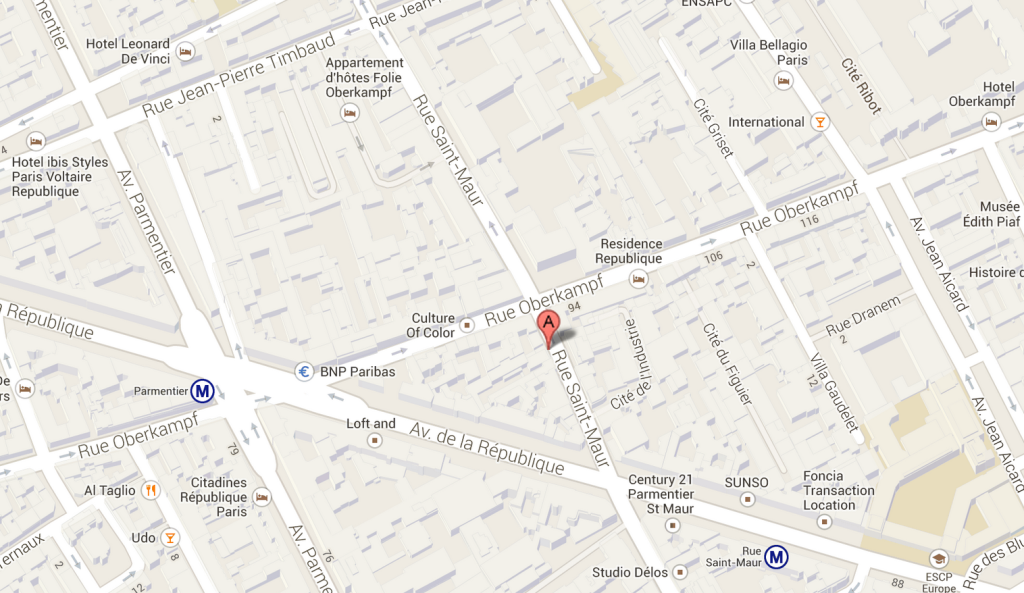Over the weekend I went to Paris to attend an exhibition being put on by my supervisor, Simon Colton. For the last eleven years he’s been building a piece of software called The Painting Fool – software which he hopes will one day be taken seriously as an artist in its own right. The exhibition, which continues this week if you’re in Paris, is the first solo exhibition by The Painting Fool. I was there on Saturday for a rather special event – live portraiture.
Over the last few weeks Simon’s been working with Dan Ventura, another Computational Creativity researcher from Brigham Young University in the US. Dan is behind all manner of wonderful creativity experiments like an artificial soup chef and DARCI, another piece of creative art software. Simon and Dan have been working to get DARCI’s ability to appreciate and evaluate art integrated with The Painting Fool, and watching some of the new features at work on Saturday was really something.
Some of the key things that The Painting Fool demonstrated on Saturday was that creative software does not need to rely on random numbers to make decisions, as well as the fact that that software does not necessarily have to be something that behaves as we expect. The Painting Fool’s mood changed throughout the evening, affected by newspaper articles it was reading, some of which were sad while others happy. This led to one of the more important points in the evening – after lots of excitement and over thirty portraits painted, the software refused one of the would-be models. It wasn’t in the mood to paint their portrait, because its mood had dropped so low.
There are lots of reasons why things like this are important for the research and the field of Computational Creativity. But as I stood there with Simon’s camera snapping reaction shots to record the event[1], it was people’s reactions to the laptop painting them that interested me the most. When The Painting Fool refused to paint, it politely suggested that the person come back later. And come back they did – they waited until midnight, when most people were leaving, to have one more chance at being painted.
People played with the software. They sat multiple people in front of it. Someone made it paint a portrait of their hand making the Peace sign. Some people offered profile shots. In return, they got out a wide variety of portraits in different styles and colours, with varying evaluations and explanation by the software of how it felt it had performed. By the end of the night the wall was full of printouts of the paintings, which people eagerly took home. It was a great experience, and a huge leap forward for the software. I’m hugely excited to see what’s next.
If you want to go to the exhibition, it’s on for most of this week at Galerie Oberkampf in Paris, right here (click for GMaps):
- [1]Unfortunately the only photos I had for this post were my awful camera phone ones, sorry!↩




Phenomenal, going to try and go this week.
Oh, cool! Are you in Paris this week? Hit me up on Steam later and we’ll chat.